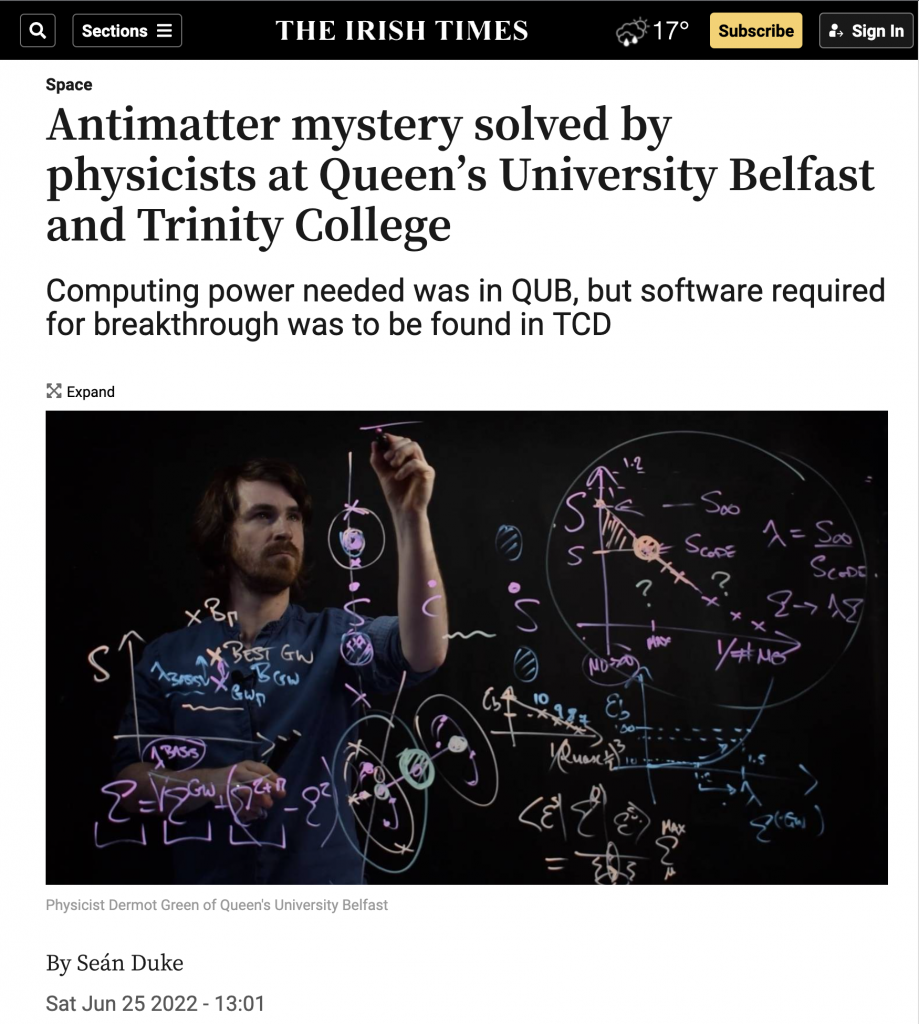We tackle difficult theoretical and computational problems in quantum many-body and atomic, molecular and optical physics. We focus on ab initio description of real systems, aiming to provide fundamental insight into the role of many-body correlations, and support experiments ongoing internationally.

Many-body theory of antimatter interactions with atoms, molecules and condensed matter
Positrons are the antiparticles of electrons. Their ability to annihilate with electrons forming two gamma rays, makes them a unique probe of matter, giving them important use over vast length scales, including as an ultrasensitive diagnostic of defects in industrially important materials, in medical imaging (via positron-emission tomography, used for study of Alzheimer’s disease) and in understanding antimatter in the galaxy.
Positron interactions with atoms and molecules is a very challenging theoretical and computational problem, owing to the dominant role played by the correlated motion of the positron and atomic/molecular electrons. They have an overwhelming effect on positron scattering, annihilation and binding, producing orders-of-magnitude enhancements of the relevant characteristics.
For atoms, the many-body-theory approaches we have developed have enabled the full account of these effects, providing a complete description of positron interactions with noble-gas atoms, predicting scattering cross sections, annihilation spectra, and thermalisation rates in complete agreement with experiment, which in many cases remained poorly understood for decades. Moreover, they provided the first accurate calculations of pickoff annihilation rates (where the positron annihilates with an atomic electron) in positronium-atom collisions, and we proposed means to properly interpret materials-science techniques that include the strong positron-electron correlations in the annihilation process.
Most recently, we have developed the many-body theory of positron-molecule interactions. It provided the first calculations of binding energies in agreement with experiment and elucidated the role of correlations, solving a decades-old fundamental problem.
The fundamental insight our work provides has important implications for the development of antimatter traps and beams, and numerous applications of positrons in condensed-matter spectroscopies and positron emission tomography.
Atomic and molecular collisions, ultracold molecule theory and quantum chaos.
Working in the Ultracold Molecule Theory group of Prof Jeremy Hutson FRS, Dermot developed total angular momentum basis coupled-channel approaches to atom-atom collisions involving lanthanides. We predicted the emergence of quantum chaos in ultracold collisions involving atomic and molecular systems with relatively simple electronic structures than had been previously identified.
Ultraintense laser-plasma interactions
With Chris Harvey (deceased 2022) Dermot solved the fundamental problem of the motion of an electron in an ultra-intense laser accounting for the key effect of photon emission.